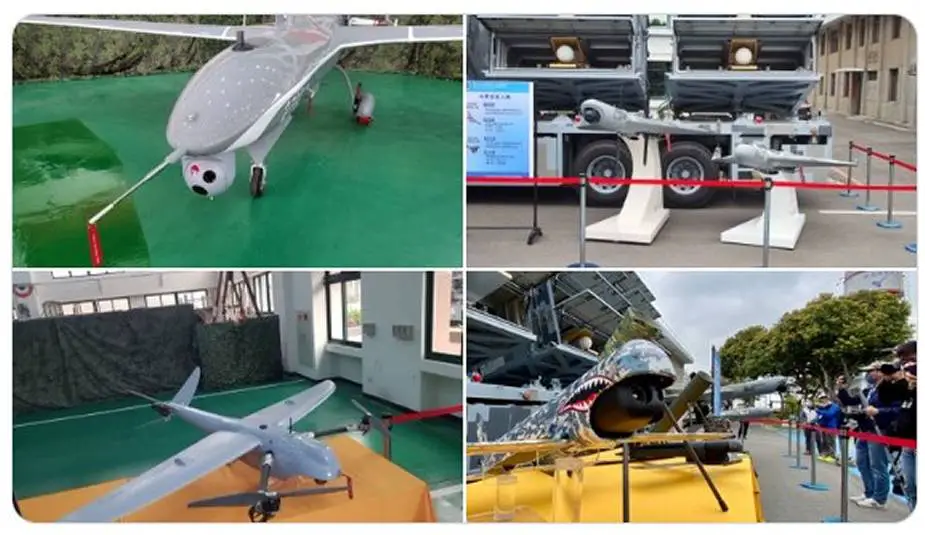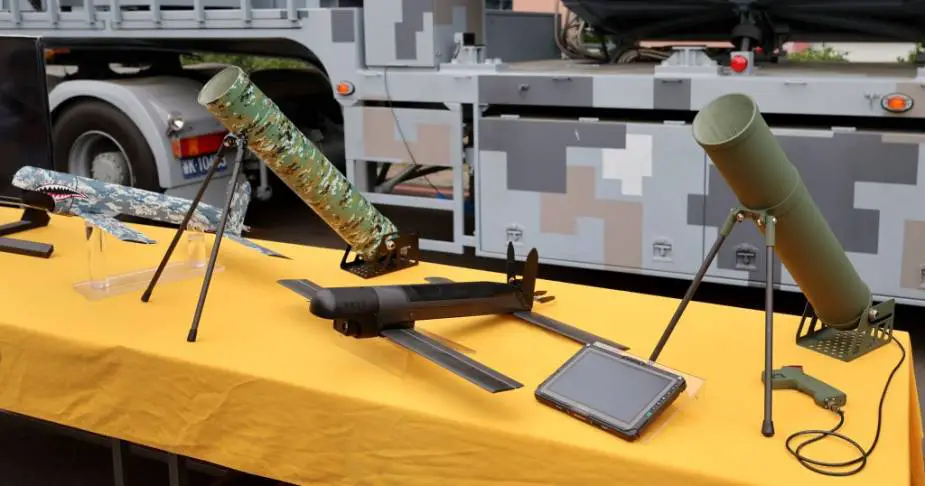Breaking news
Taiwan NCIST unveils small loitering munitions similar to Aerovironment Switchblade and attack drones.
In a tweet posted on March 14, Taepodong publishes that the National Chung-Shan Institute of Science and Technology (NCSIST) unveiled four types of drones: Albatross II, Chien Hsiang attack drones (optical guidance and GPS guidance versions), Cardinal III drone (VTOL), and NCIST switchblade-loitering munition. The loitering munition – also nicknamed kamikaze drone – is similar to the US-made AeroVironment Switchblade supplied to Ukraine, Matthew Strong writes in Taiwan News.
Follow Army Recognition on Google News at this link

The National Chung-Shan Institute of Science and Technology (NCSIST) unveiled four types of drones: Albatross II, Chien Hsiang attack drones (optical guidance and GPS guidance versions), Cardinal III drone (VTOL), and NCIST switchblade-loitering munition (Picture source: Twitter account of Taepodong)
The new loitering munition can reach a target located up to 10 kilometers away, the NCSIST said at a press conference Tuesday. The targets could be high-value individuals or vehicles, including ships close to the shore, according to the report. The military-run NCSIST showed 10 drones, including the Albatross I already in production, and prototypes of the Albatross II and the Cardinal III still under development, Matthew Strong reports.
Let us remind that the AeroVironment Switchblade is a small, unmanned aerial vehicle (UAV) designed for use in military operations. Its primary role is as a loitering munition, which means that it can fly for an extended period of time and then be directed to attack a target when it is identified.
The Switchblade is launched from a tube and can be controlled by a ground operator using a hand-held device. It has a range of up to 10 kilometers and can stay aloft for up to 15 minutes, depending on the mission and payload. Once the target is identified, the Switchblade can be directed to fly into it, using a small warhead to destroy it. The warhead is designed to minimize collateral damage, making it an attractive option for use in situations where precision is required.
The Switchblade is also equipped with a camera and other sensors, which allow operators to gather intelligence and assess the situation before engaging a target. Its small size and portability make it an effective tool for use in a variety of tactical situations, including urban combat and counterterrorism operations. The weapon can be remote-controlled by the operator and destroyed if the target disappears or moves to a crowded location.
AeroVironment has developed several different types of Switchblade unmanned aerial vehicles (UAVs), each with its own unique capabilities and specifications. Here are some of the most notable types:
• Switchblade 300: The original Switchblade model, with a range of up to 10 kilometers and a maximum flight time of 15 minutes.
• Switchblade 600: A longer-range version of the Switchblade, with a range of up to 40 kilometers and a maximum flight time of 30 minutes.
• Switchblade 300 LE: A version of the Switchblade designed specifically for law enforcement, with a smaller warhead and a reduced range of 5 kilometers.
• Switchblade 600 LE: A longer-range version of the Switchblade 300 LE, with a range of up to 10 kilometers.
• Switchblade 300 EC: An "extended carriage" version of the Switchblade, which can carry a larger payload of up to 1.8 kilograms.
• Switchblade 600 EC: A longer-range version of the Switchblade 300 EC, with a range of up to 40 kilometers and a maximum flight time of 30 minutes.
Each type of Switchblade is designed for specific missions and situations, with varying ranges, flight times, and payload capabilities. NCIST's "kamikaze drone" most probably follows the same principle.

The NCIST unveils a Switchblade-like loitering munition (Picture source: CNA)
Defense News March 2023


























